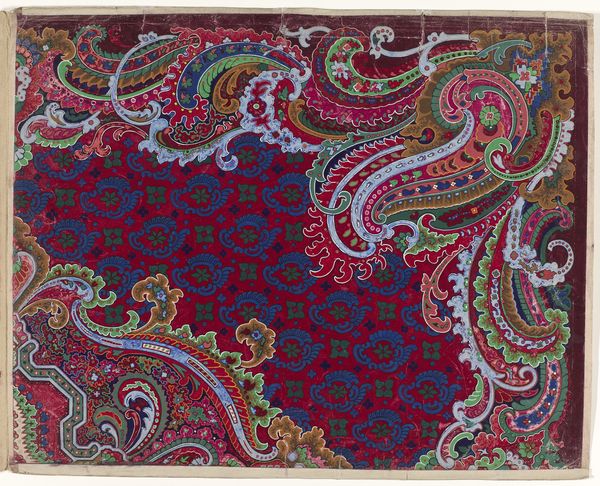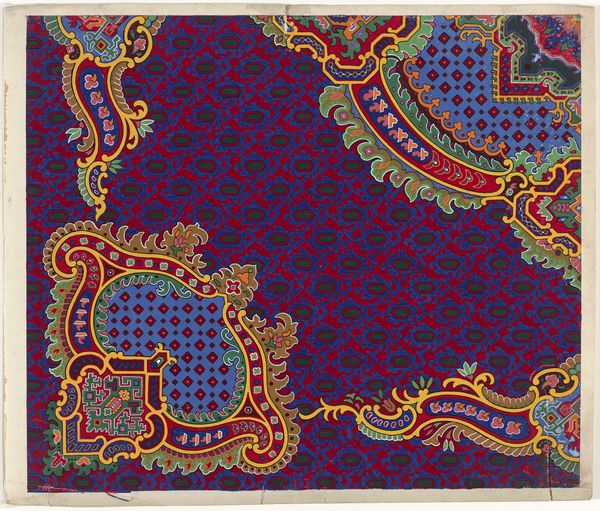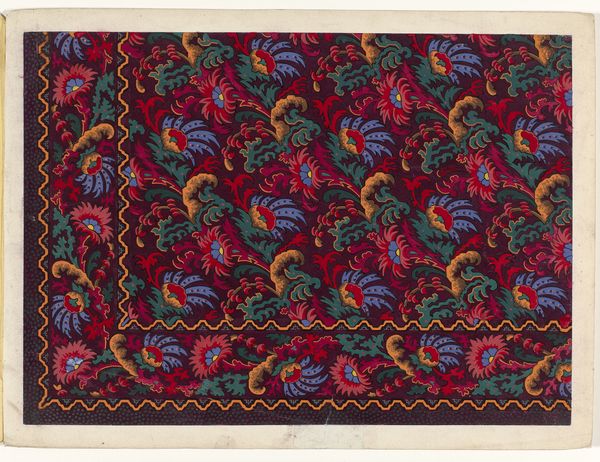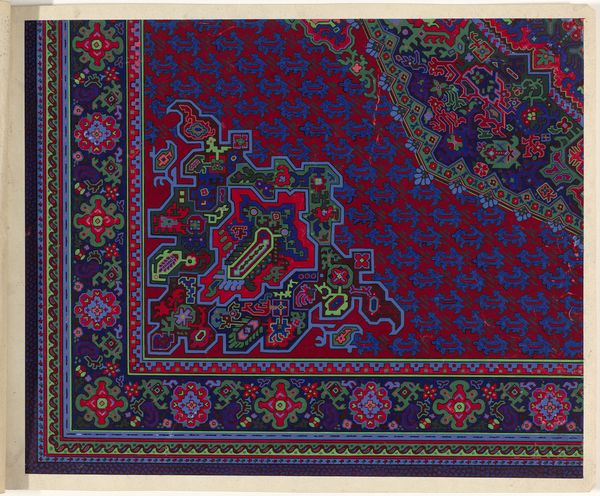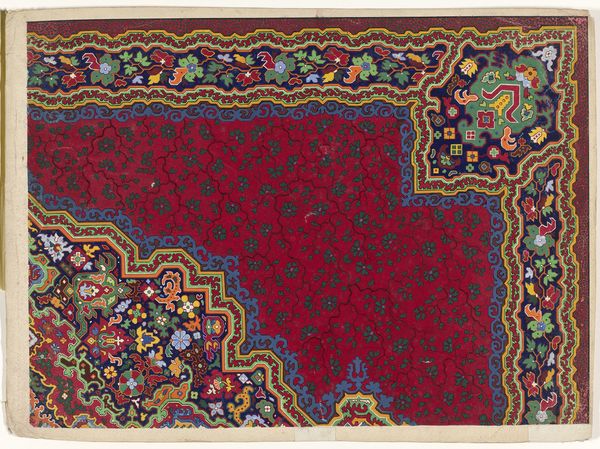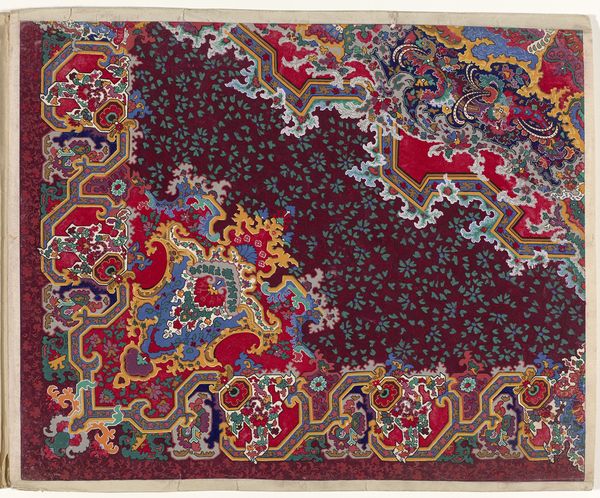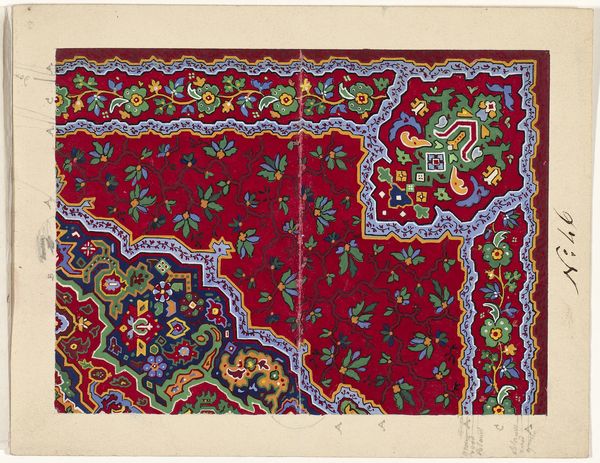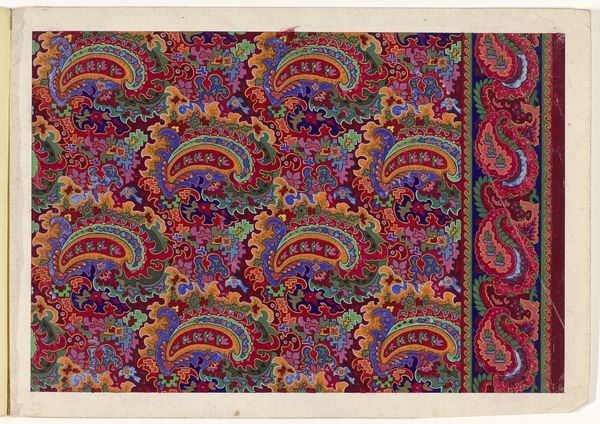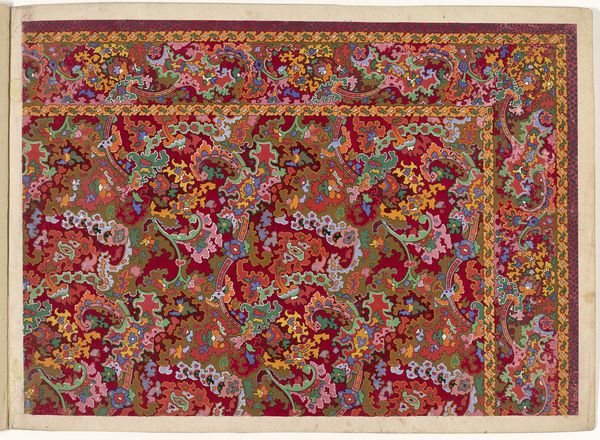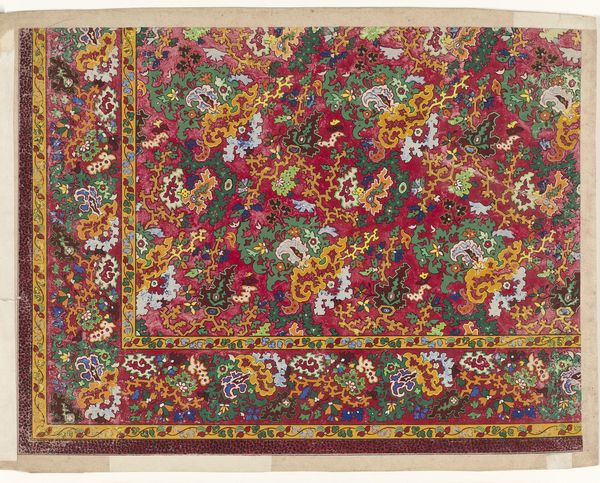
drawing, textile
#
drawing
#
organic
#
textile
#
geometric pattern
#
abstract pattern
#
organic pattern
#
geometric
#
flower pattern
#
decorative-art
#
layered pattern
Dimensions: height 280 mm, width 380 mm
Copyright: Rijks Museum: Open Domain
Editor: This mixed-media drawing, "Ontwerp voor een tapijt," dates back to 1859. It seems like a design for a carpet and features a complex, eye-catching paisley pattern in the corner. I find the layered patterns mesmerizing! What stands out to you? Curator: The patterns resonate deeply with the colonial history woven into textile production. Consider the appropriation and transformation of designs across cultures through trade and power dynamics. These ornate patterns can obscure the exploited labor used in the actual carpet production, no? How can we reconcile the beauty of the design with the potential for exploitative practices involved in its creation? Editor: That’s a really important point I hadn't considered. So the drawing prompts us to think critically about the connection between the design and the actual carpet production? Curator: Exactly. It is crucial to acknowledge the social and economic contexts that shape our understanding and appreciation of art. Where did these pattern traditions come from and who was allowed to express themselves with the labor? Consider the legacy of craft traditions and its relationship to gender and class? The geometric aspects further remind us of that complexity and constraint. Editor: I see how understanding those layers helps us move beyond a simple appreciation of the aesthetic to something more complex. I'll never look at a carpet the same way. Curator: It challenges us to become more conscious consumers and appreciate the art, whilst being very conscious and critical of the production of these materials.
Comments
No comments
Be the first to comment and join the conversation on the ultimate creative platform.


